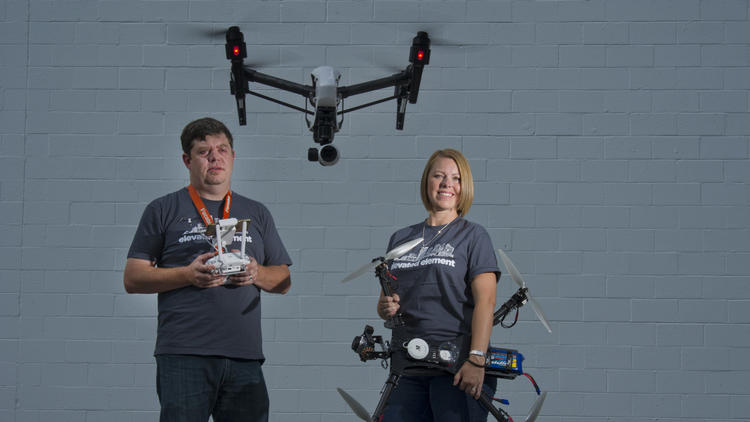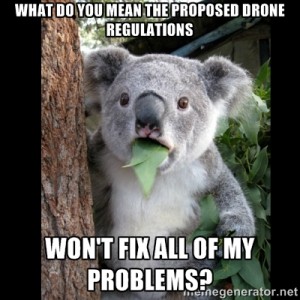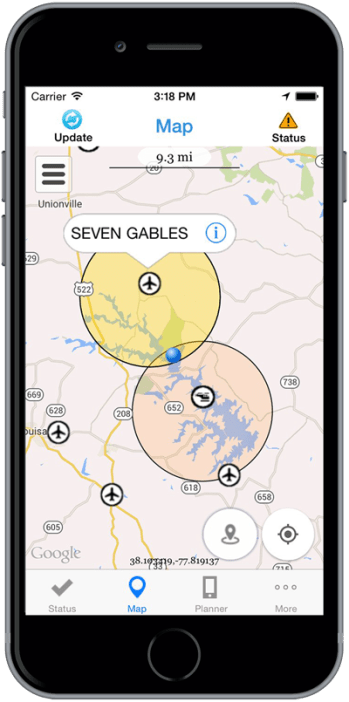AUG. 31, 2015

Credit Wesley Bedrosian
Stephanie Rosenbloom
It was a blistering hot Sunday in Provence. The painted shutters of the houses in Arles were closed. Visitors were scarce. In the Roman amphitheater, built to hold some 20,000 spectators, I sat among empty bleachers, above homes with orange tile roofs, looking past ancient arcades and terraces to the blue horizon. Was this the sort of stillness van Gogh experienced when he was in Arles on this same June day in 1888? I began to entertain the thought but was distracted by a soft whirring; a faint electric hum. Something was drawing near. I looked around and saw nothing — until it and I were eye to eye.
Or rather, eye to lens. A drone resembling one of those round Roomba robotic vacuums had levitated from the pit of the nearly 2,000-year-old arena and was hovering in the air between me and the cloudless horizon. Reflexively I turned away and tugged on the hem of my dress. Who knew where this flying Roomba was looking or what it was recording?
Unexpected moments of tranquillity, like finding yourself in a near-empty Roman arena during a heat wave, are becoming more and more elusive. If someone isn’t about to inadvertently impale you with a selfie-stick, another may catch you on video with a recreational drone, like the DJI Phantom (about $500 to $1,600), which is easy to use (unless you’re inebriated, like the man who crashed a Phantom on the White House grounds in January).
Yet what travelers are seeing today — remote-controlled drones bobbing around tourist sites, near airports, in the Floridian National Golf Club in Palm City while President Obama played golf — is but the tip of the iceberg. Think remote-controlled drones and selfie-sticks are intrusive? Prepare for the selfie-drone.
This next generation of drones, which are just beginning to roll out, doesn’t require users to hold remote controllers: They are hands-free. Simply toss them in the air, and they will follow you like Tinker Bell. With names such as Lily (around $700 on pre-order) and Nixie (not yet available for pre-order), they are capable of recording breathtaking video footage and trailing adventure travelers across bridges and streams, down ski slopes and into secluded gardens.
Nixie, which you can wear on your wrist until you want to fling it off for a photo or video, has a “boomerang mode” that allows it to fly back to you as if it were a trained raptor. A promotional video for Lily shows a man with a backpack lobbing the drone like a stone over a bridge and casually walking away, only to have the thing float up and follow him. Think you can outmaneuver the contraption in white-water rapids? Lily is waterproof. I watched with awe a video of Lily being dumped into a river beside a woman in a kayak (where one assumes Lily will perish), yet within seconds emerging and rising, like Glenn Close from the bathtub in “Fatal Attraction.”
There is no denying that the latest drone technology is impressive. And the footage is striking. Adventure travelers who wish to watch themselves scale Kilimanjaro or surf in Hawaii along the North Shore of Oahu will no doubt want one. But if selfie-drones become staples of every traveler who can afford them, we stand to lose more than we stand to gain when it comes to privacy, safety and quality-of-life factors like peace and beauty.
Imagine sunsets at the lake or beach with dozens of selfie-drones cluttering the sky, each vying for that perfect shot. Picture canoodling on a seemingly remote park bench during your romantic getaway and ending up on video. The intimate walks and tête-à-têtes that call to mind Jane Eyre and Mr. Rochester would hardly be the same with drones whizzing by. Think of your children building sand castles and being videotaped by passing drones. Who will be watching and recording us, and where will that information end up?
I shudder to think of 17- and 18-year-olds receiving drones for Christmas and on their winter vacations crashing the contraptions into unsuspecting sunbathers. Or themselves. Lest you think I joke, consider that in May the singer Enrique Iglesias, who is well past his teenage years, sliced his fingers while trying to snap a photo with a (remote-controlled) drone during his concert in Mexico.
Strolling Sheep Meadow in Central Park in New York on a warm spring day is already an art with all of the dodging of footballs and Frisbees one must perfect to survive. Throw in selfie-drones, and I may have to buy a flaneur’s helmet. Why not? If a drone is in midair when its battery dies, it falls from the sky.
Pitfalls abound. Yet when it comes to travel, there is no greater concern than drone use near airports. The Federal Aviation Administration said in August that pilot reports of close calls with drones had increased drastically in 2015, to more than 650 sightings by Aug. 9, up from 238 in all of 2014.
“Pilots of a variety of different types of aircraft — including many large, commercial air carriers — reported spotting 16 unmanned aircraft in June of 2014, and 36 the following month,” the F.A.A. said in a statement. “This year, 138 pilots reported seeing drones at altitudes of up to 10,000 feet during the month of June, and another 137 in July.”
2 weeks ago, I made the hike to Blanca Lake, in the Henry M. Jackson Wilderness in Washington’s Cascades. This a glorious glacier-fed lake…
What happens when morons (and lets face it, these days, it seems that a disproportionate number of travelers are morons) start flying those…
I recently had a close encounter with a whiny recreational drone near an otherwise peaceful marsh on Cape Cod. The operator (a middle-aged…
Drones have been spotted near all of the New York area’s major airports, including John F. Kennedy International, La Guardia and Newark Liberty International in New Jersey. Last year, pilots on major carriers reported seeing drones 100 feet off a wing (Delta) and flying under the plane’s nose (JetBlue).
The Global Gateway Alliance, a New York and New Jersey airport advocacy group, said in a news release that the high number of drone incidents in the New York airspace accounted for almost a third of all close-calls nationwide. In August, the alliance called for steps to make drone use safer in the wake of various incidents that the group said put passengers, planes and airports at risk. The steps include stricter enforcement of “No Fly Zones,” better drone technology, mandatory training for drone users, air-traffic-control monitoring, and education for people who live near airports about the dangers and penalties of flying drones in the area.
“It defies reason that unmanned aircrafts are putting the lives of thousands of passengers in danger without clear consequences,” Joe Sitt, the chairman and founder of the alliance, said in a news release. “It is past time for the F.A.A. to step up and protect the nation’s most crowded airspace for the 117 million passengers who use it every year.”
The F.A.A. has certain rules in place for recreational aircraft use, but it is obvious from the close-call statistics that plenty of drone operators are unaware of them or ignore them. In May, as legions of tourists prepared to visit Washington, D.C., and the area for summer vacations, the administration issued a news release saying that Washington was a “no drone zone.”
“Enjoy your visit to the nation’s capital,” the F.A.A. said. “Bring your family, your cameras and plenty of sunscreen. Just don’t bring your drone.”
Can we extend that to the rest of the states, not to mention Roman amphitheaters in the French countryside? As an admirer of travel videos, I am wowed by the capabilities of the selfie-drone. That doesn’t mean I care to watch play-by-play footage of my vacation. Or spend that vacation hauling a drone in my handbag. Alas, the genie is out of the bottle. The selfie-drone is coming.
All I can do now is make a wish: that certain beaches, gardens and ancient ruins become no-drone zones, too, so that travelers who appreciate tranquillity may be lucky enough to steal a quiet moment in them.
http://www.nytimes.com/2015/09/06/travel/selfie-camera-drones.html?_r=1








 Earlier this year, the
Earlier this year, the